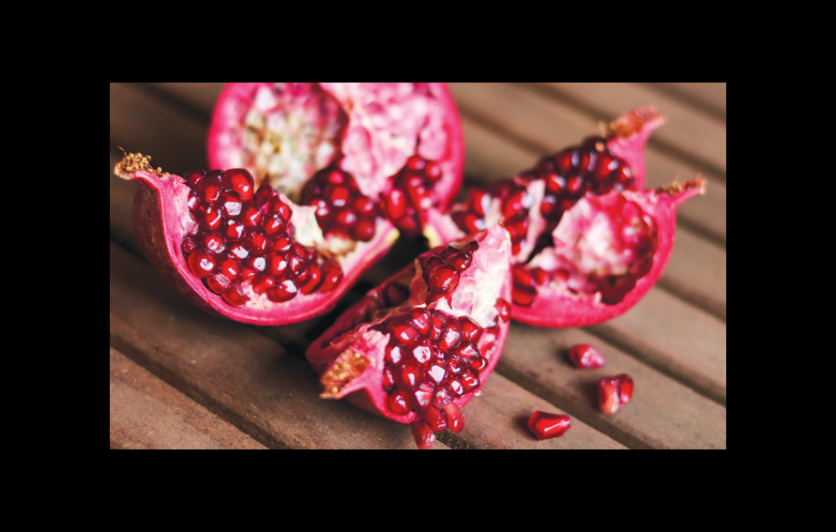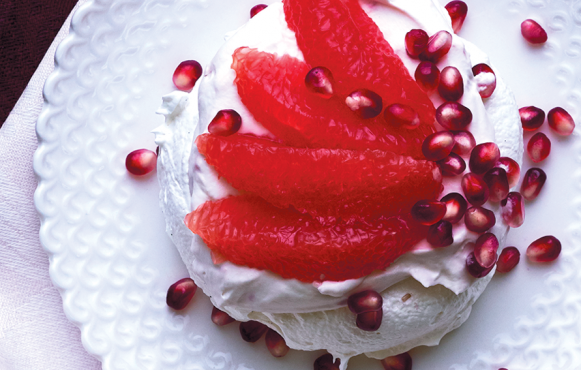Persephone’s Fruit

Chef Joshua Wickham and Chef Adam Hager from Columbus State Community College offer their favorite recipes with this elegant, antioxidant-packed wintertime fruit.
Presented in partnership with Williams-Sonoma.
It’s a myth. Greek, to be exact. Persephone was the beloved child of Zeus and Demeter, goddess of vegetation and queen of the underworld with Hades, god of the underworld. What put her there? The four seeds of a pomegranate. For four months out of the year—what we call winter—Persephone lives in the dark realms of earth and rises back to our world of sunshine come spring. In cultures the world over, pomegranate, which is actually a berry, is a symbol of fertility, new life and plenty. While not grown and harvested in Ohio, you’ll find this fruit at market during the winter months, and there are many ways to cook with it. Chef Joshua Wickham and Chef Adam Hager from Columbus State Community College offer their favorite recipes with this elegant, antioxidant- packed wintertime fruit.
And a cook’s tip from our copy editor, Doug Adrianson, who has pomegranate growing in his backyard in California: The easiest (and certainly tidiest) way to remove the seeds (technically called arils) is to submerge the fruit in a bowl or sink of water and tear it apart underwater. The chaff will float and is easily skimmed off; the seeds can be collected under the water and then pressed for juice. The seeds can stain as badly as beets, so caution is a good idea.
—Colleen Leonardi







